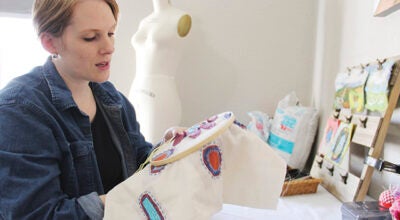Start your garden indoors
Published 1:00 pm Wednesday, February 27, 2019
Getting antsy to plant your seeds for this year’s vegetable garden? Don’t worry, you’re not alone.
Though you may want to get a jump start on this year’s planting season, Tony Hill, retail manager of Hill’s Gardens, encourages gardeners to not start too early planting seeds indoors.
“That’s the biggest mistake people make — starting too soon,” Hill said.
He advised people to remember four things: timing, temperature, light and air movement.
Though every spring is different, Hill said mid-April is typically a good time to start tomato seedlings. Tomato plants cannot be transplanted outdoors into the garden until the danger of frost has passed, which is usually mid-May, though he said the historical last frost date spills over into the first few days of June.
Don’t know what veggies are good to start indoors?
The Old Farmer’s Almanac states you can start seeds for broccoli, Brussels sprouts, cabbage, cauliflower, eggplant, lettuce, peppers, pumpkins, Swiss chard, tomatoes and watermelons indoors.
Seeds for beets, carrots, corn, garlic, okra, onions, peas, parsnips, potatoes, radishes, squash and zucchini should be planted outdoors.
For the plants people start indoors, seeds can be planted in peat pots, which can then be planted directly into the soil outdoors once frost has passed, or in plastic pots. Hill said both options work well, depending on personal preference.
A good temperature for starting most seeds is 70 degrees. If the room where you want to have your seeds isn’t room temperature, you might need to use heat mats, which are placed under the pots. These come in thinner strips for window sills and in the sizes of flats that people can purchase at garden centers.
It is also important to make sure the seeds get enough light. If they aren’t in a window with strong lighting, a secondary light source should be placed over them.
Having a small fan nearby to create a breeze on the seedlings will help the plants create thicker cell walls, which makes the stems stronger.
Hill said once the seeds start growing, make sure to thin them out so there aren’t so many so close together. This will allow the plants to get larger and stronger.
Step-by-step guide of how to start seeds
1. Fill clean containers with a moistened potting mix made for seedlings. Use soilless peat moss and mix in equal parts vermiculite and perlite to hold enough water and allow oxygen to flow. Pre-formed seed starters (such as Jiffy pellets) work well, too.
2. Plant your seeds according to the seed packet. Most seeds can simply be gently pressed into the mixture; you can use the eraser end of a pencil to do so.
3. Cover containers with plastic to keep them from drying out too quickly. Poke a few holes in the plastic with a toothpick for ventilation.
4. Water newly started seeds carefully. Try using a turkey baster to avoid causing too much soil disruption.
5. When seedlings start to appear, remove the plastic and move containers into bright light.
Moving seedlings outside
1. Seven to 10 days before transplanting, set the seedlings outdoors in dappled shade that is protected from winds for a few hours each day, gradually increasing their exposure to full sun and windy conditions.
2. Keep the soil moist at all times during this period. Dry air and spring breezes can result in rapid transpiration. If possible, transplant on overcast days or in the early morning, when the sun won’t be too harsh.
— Information from The Old Farmer’s Almanac at www.almanac.com






